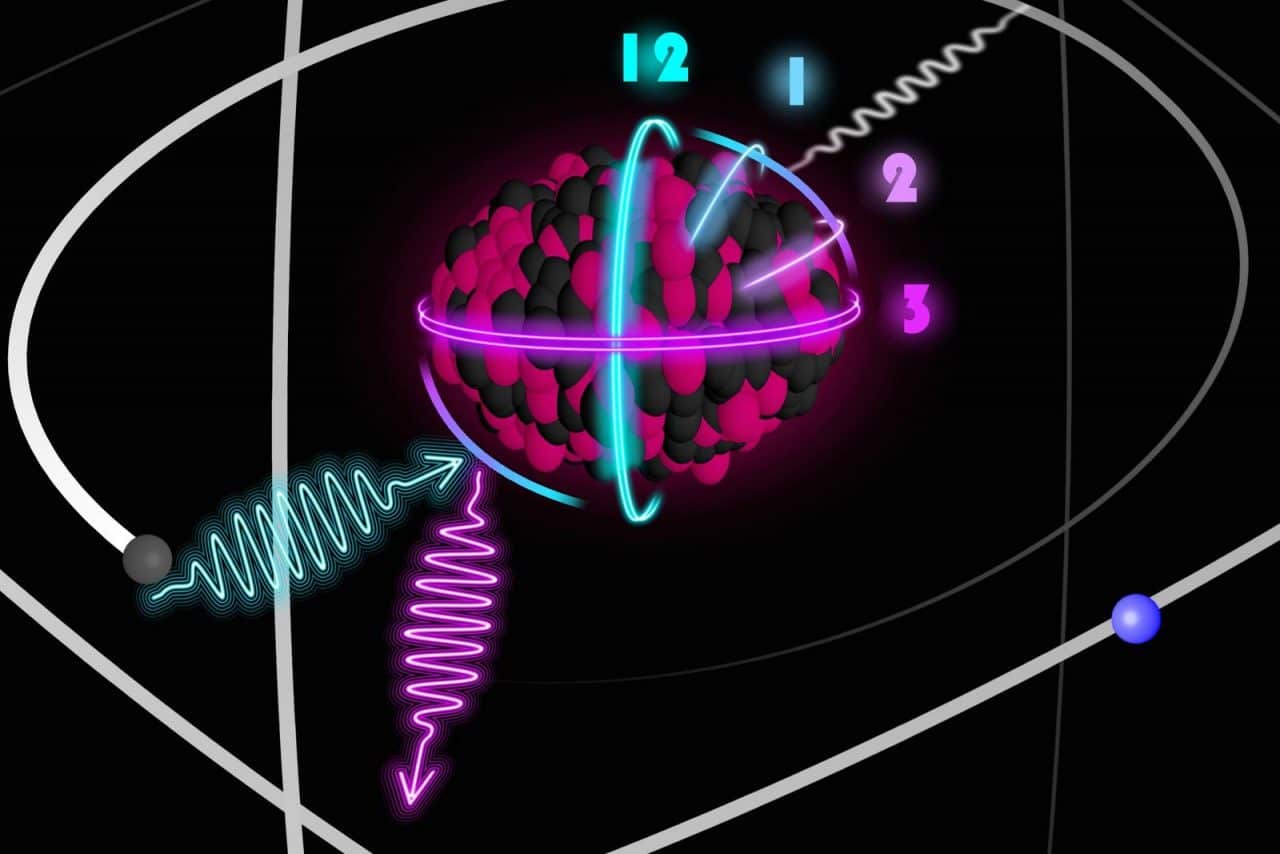
The vision of a clock with an atomic core has been around for a long time, but its realization has kept researchers busy for decades. The challenge was to find an atomic nucleus (core) suitable for building a new generation of high-precision clocks. Now, two different international research teams have succeeded simultaneously.
These new findings have paved the way for the development of high-precision clocks. These will make a valuable contribution to basic research. Here, they will make it possible to investigate still unexplored dark matter. Nuclear clocks could also be used to check whether the natural constants are actually exactly constant. Additionally, the nuclear clock would make many measurements more precise that are only indirectly connected to time measurement: For example, tiny irregularities in the Earth’s gravity field could be measured and objects could be positioned more precisely using satellite-based navigation.
More precise measurements with core states
Research for the most accurate clock has a long tradition. It is known, for example, that a clock generator is needed that ticks very often and extremely precisely. A forerunner of the nuclear clock is the atomic clock. Its generators are the electrons in an atom, which can switch back and forth between two different states in a very precisely defined way. With the nuclear clock, it is not the states of the electrons that are used as generators, but the states of the atomic core.
In the atomic clock, the states of electron sheaths also allow for precise measurements: they can even be used to measure the gravitational time difference between a mountain peak and the valley. But core states make even more precise measurements possible. A further advantage of the atomic nucleus is that it is better protected against disturbances such as those occurring in external electromagnetic fields.
Low-energy isomer state
It has long been assumed that thorium nuclei are suitable for the construction of atomic core clocks. However, it was necessary to prove the core condition of thorium – which was both complicated and complex. Suitable methods could now be found simultaneously in two different transnational research groups. Professor Thorsten Schumm from the Atomic Institute of the TU Vienna was involved in both experiments.
“In nuclear physics one usually has to deal with very high energies. The energies of electrons orbiting the atomic nucleus are normally much lower, so it is relatively easy to manipulate these electrons with laser beams. This is usually not possible with atomic nuclei.” Thorsten Schumm
That’s the rule. Thorium nuclei of isotope 229 are an exception. This is due to the low energy level of a nuclear state called isomer. This core state is just above the ground state – the state with the lowest possible energy. This means that the energy difference (transition) between ground state and isomer is much smaller than in other atomic nuclei. According to current knowledge, thorium-229 is the only atomic nucleus with a low-energy isomer state like this. It is precisely this transition between the two core states in thorium that can be used to build a nuclear clock.
Determining the exact energy value
What separated the researchers from the breakthrough so far was the knowledge of the exact energy value of the thorium isomer state. A group of researchers, including teams from Ludwig Maximilians University Munich, the Max Planck Institute (MPI) for Nuclear Physics Heidelberg and the TU Vienna, now found a method to determine this. Schumm and Simon Stellmer from the Atomic Institute of the TU Vienna helped develop the experiment. Florian Libisch and Christoph Lemell from the Institute of Theoretical Physics at the TU Vienna carried out computer simulations that led to a quantitative measurement of the isomer energy.
Release of energy
The experiment was based on radioactive uranium nuclei of the isotope 233 from sources produced at the MPI Mainz. When these disintegrate, electrically charged thorium ions are formed. About two percent of these are in the sought-after excited core state. These thorium ions were again electrically neutralized and directed through a thin graphene layer from which thorium ions take the missing electrons. The neutral thorium atoms can then spontaneously change from the excited core state to the lowest core state. This releases energy in the form of an electron which is hurled away.
The next step is to measure the energy of this electron. If controlling and calculating all details of the complicated experiment is successful, the energy of the thorium nucleus state can be deduced.
Irradiation with synchrotron
The second research group is located in Japan and had a completely different approach: the thorium nuclei were irradiated with a synchrotron. It produces extremely intense X-rays that transfer the thorium nuclei to the second excited core state with an energy that is thousands of times higher. From this state, the thorium nuclei then change predominantly into the sought-after first excited state, near the ground state.
The atoms are then actively pumped into the isomer state where they can be measured.
“This is an extremely important step for us: not only do we know that the excited state actually exists just above the ground state, but we also know its energy quite well.” Thorsten Schumm
In further measurements the state will be measured even better, then the way should be paved for the construction of compact, high-precision nuclear clocks.
Original publication:
Energy of the 229th nuclear clock transition







